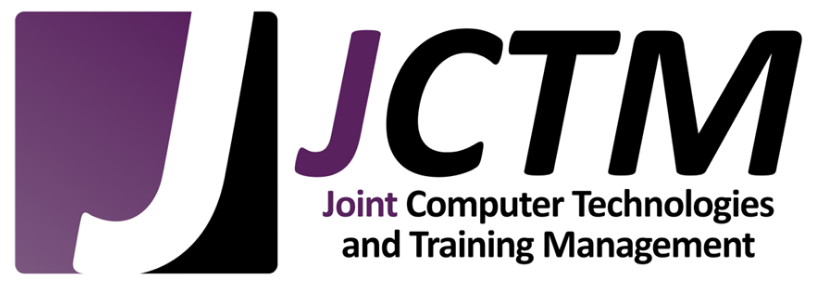Multimodal Prompts in Healthcare: Revolutionizing Patient Care
January 7, 2025
The healthcare industry is undergoing a transformation fueled by multimodal artificial intelligence (AI). By combining diverse data types such as text, images, and audio, multimodal AI enables a richer, more holistic approach to patient care. This innovation addresses longstanding challenges in healthcare, such as synthesizing complex data from disparate sources, and opens the door to more personalized and accurate treatments.
In this article, we explore key applications of multimodal prompts in healthcare, highlighting their potential to revolutionize patient care.
Visual Question Answering in Medical Imaging
Medical imaging is one of the most impactful applications of multimodal prompts. By integrating image analysis with natural language processing (NLP), AI systems can now interpret medical scans and provide detailed, contextual insights.
Example Prompt:
“Analyze this chest X-ray image. Is there any evidence of pneumonia? If yes, describe the affected areas and severity.”
This type of prompt allows AI systems to:
- Analyze visual data from X-rays or other imaging modalities.
- Interpret the clinician’s specific query.
- Provide a structured response that includes both a diagnosis and a description.
Multimodal AI enhances diagnostic workflows by augmenting radiologists’ capabilities. For example, a study highlighted in [1] demonstrated that multimodal systems can detect subtle anomalies in scans, reducing the risk of misdiagnosis and speeding up the diagnostic process. However, successful implementation requires high-quality datasets and adherence to regulatory standards to ensure patient safety.
Integrating Patient History with Current Symptoms
Holistic patient assessment is critical for accurate diagnoses. Multimodal AI can combine a patient’s medical history (text) with real-time symptoms presented verbally or visually.
Example Prompt:
“Given this patient’s medical history [text input] and the current rash shown in the image, what is the most likely diagnosis? Explain your reasoning.”
This approach mimics the way doctors integrate past and present information to reach conclusions. By synthesizing historical and current data, AI can detect patterns that might otherwise be overlooked. For instance, multimodal systems could identify a link between a patient’s prior autoimmune condition and a new dermatological symptom, leading to faster and more accurate diagnoses[2].
However, challenges such as ensuring data interoperability across systems and protecting sensitive patient information remain significant.
Enhancing Remote Patient Monitoring
The integration of wearable devices, electronic health records (EHRs), and environmental sensors has revolutionized remote patient monitoring. Multimodal prompts enable AI to analyze data streams from multiple sources to provide actionable insights.
Example Prompt:
“Analyze the patient’s heart rate data from their smartwatch over the past week, combined with their recent lab results and sleep patterns. Are there any concerning trends or anomalies that require immediate attention?”
With this approach, AI can:
- Process wearable device data (e.g., heart rate trends).
- Interpret textual information (e.g., lab reports).
- Detect patterns in sleep or activity levels.
Multimodal AI excels at early detection of health deterioration, such as identifying atrial fibrillation from heart rate irregularities combined with reported fatigue[4]. While this promises better outcomes for chronic disease management, challenges such as data standardization and patient consent must be addressed.
Personalized Treatment Planning
Multimodal AI is redefining personalized medicine by considering a broad spectrum of patient data, including genetic information, lifestyle factors, and recent medical tests.
Example Prompt:
“Based on the patient’s genetic profile, current medication list, lifestyle factors (text), and recent blood test results (image), suggest the most appropriate treatment plan for managing their Type 2 Diabetes.”
By leveraging multimodal prompts, AI can recommend tailored treatment plans that consider a patient’s unique circumstances. For instance, combining genetic markers with dietary habits and medication interactions enables more precise recommendations, reducing the risk of adverse effects[4]. However, ethical concerns, such as ensuring equitable access to advanced AI systems, need to be carefully managed.
Enhancing Clinical Decision Support
Multimodal prompts significantly improve clinical decision support systems (CDSS), providing a more comprehensive view of a patient’s condition.
Example Prompt:
“Given the patient’s symptoms (text), vital signs (numerical data), and CT scan results (image), what are the top three differential diagnoses? Provide your reasoning for each.”
These prompts enable AI systems to:
- Integrate diverse clinical data types.
- Apply medical knowledge to identify possible diagnoses.
- Explain the reasoning behind each suggestion.
Studies show that multimodal CDSS tools can reduce diagnostic errors by cross-referencing multiple data points and offering evidence-based recommendations[5]. Nevertheless, care must be taken to ensure these systems complement, rather than replace, clinicians’ expertise.
Challenges and Future Directions
While multimodal prompts offer transformative potential, several challenges must be addressed to realize their full benefits:
- Data Interoperability: Seamlessly integrating data from EHRs, wearables, and imaging systems requires standardization across platforms.
- Privacy and Security: Protecting sensitive patient information is critical, especially as data sharing increases.
- Bias and Equity: Ensuring AI systems work equitably across diverse populations remains an ongoing concern.
Looking forward, advancements in real-time multimodal data integration and predictive analytics hold great promise. For instance, AI systems may soon predict disease progression or recommend preventive interventions based on live data streams from wearables and home monitoring devices.
Conclusion
Multimodal prompts represent a significant leap forward in healthcare AI, enabling richer, more accurate, and personalized insights. From assisting radiologists with complex diagnoses to enhancing remote patient monitoring, this technology bridges the gap between human expertise and artificial intelligence.
As multimodal AI continues to evolve, its success will depend on fostering collaboration between healthcare professionals, AI developers, and policymakers. By addressing challenges such as data interoperability and ethical concerns, we can unlock its full potential to improve patient outcomes and revolutionize medical care.
[1]
Multimodal machine learning in precision health: A scoping review
https://www.nature.com/articles/s41746-022-00712-8
[2]
Evaluating multimodal AI in medical diagnostics | npj Digital Medicine
https://www.nature.com/articles/s41746-024-01208-3
[3]
Exploring Prompt Engineering: The Rise of Multimodal CoT | MathAware Nude AI Generators & NSFW
https://www.mathaware.org/prompt-engineering-multimodal-cot-prompting-2/
[4]
Multimodal AI in Healthcare: The Definitive Guide - Binariks
https://binariks.com/blog/multimodal-ai-for-healthcare/
[5]
The application of multimodal large language models in medicine
https://www.thelancet.com/journals/lanwpc/article/PIIS2666-6065(24)00042-7/fulltext
